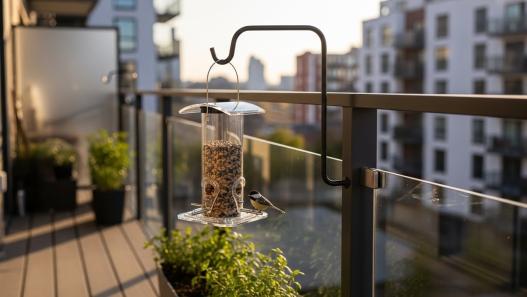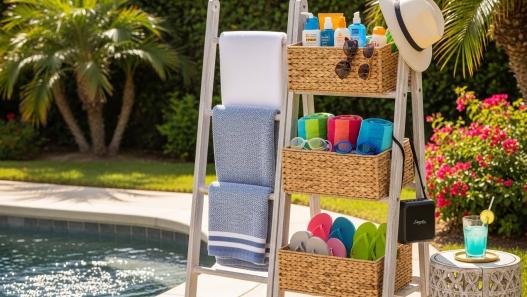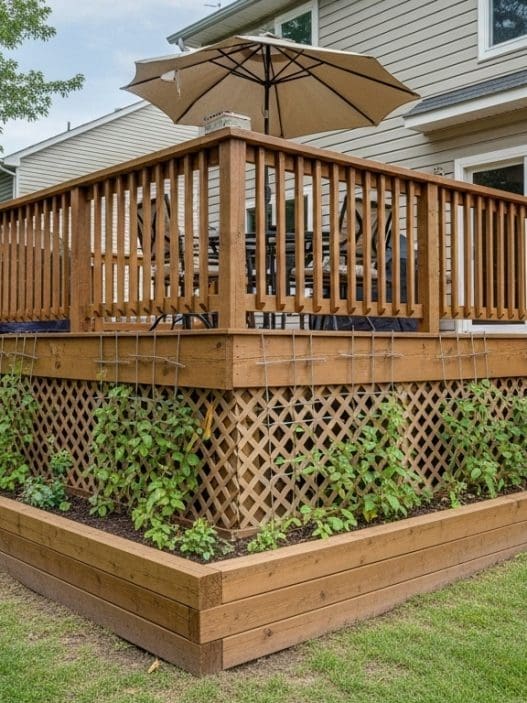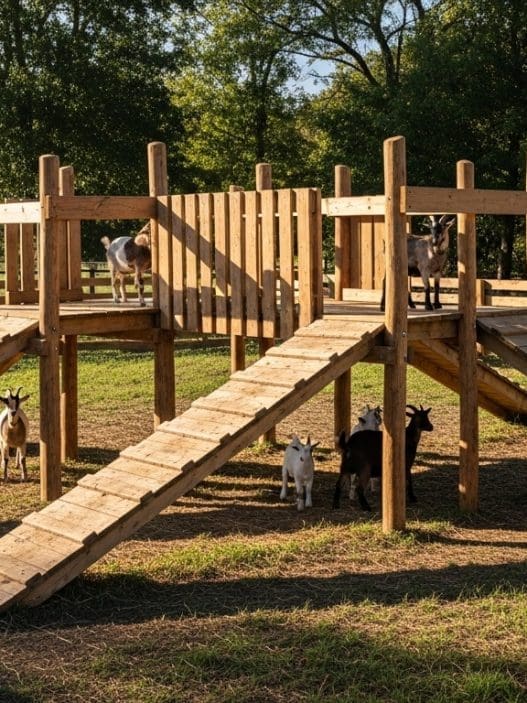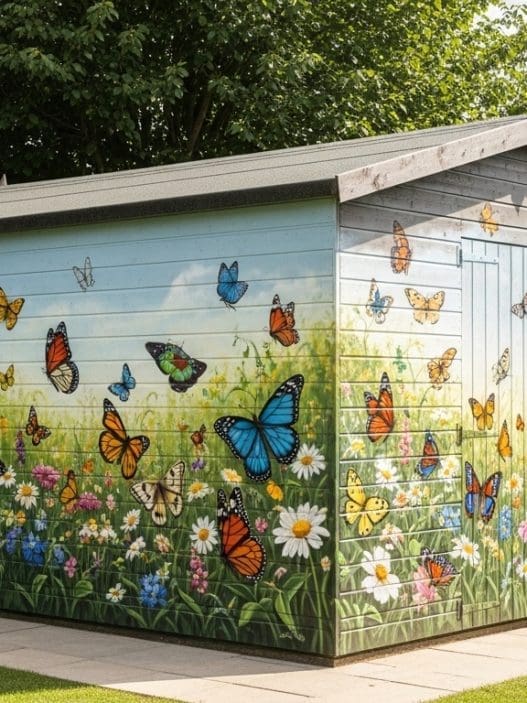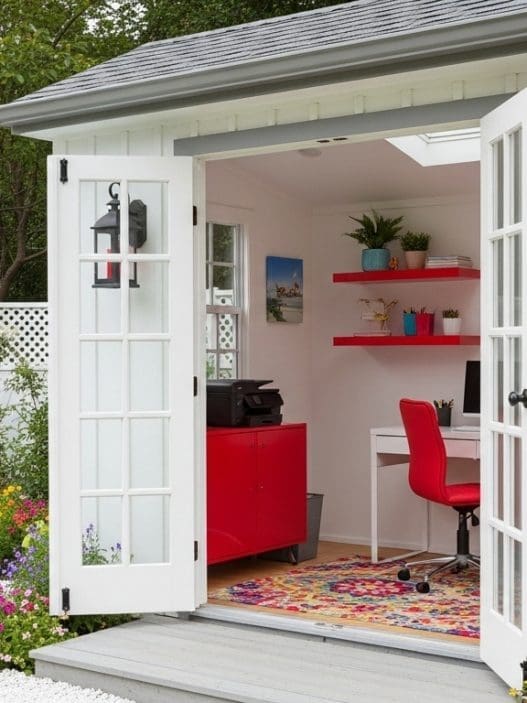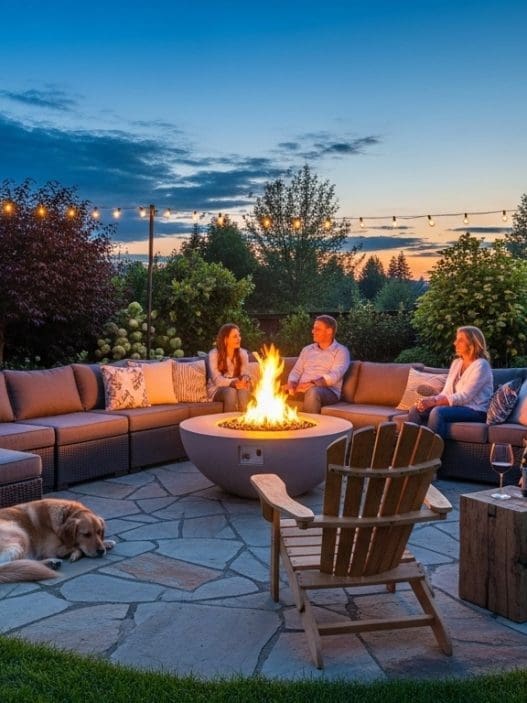Hammocks are one of the easiest and most affordable ways to transform your backyard into a relaxing retreat. Whether you want a shady place to nap, a decorative feature for entertaining guests, or a simple way to elevate your outdoor lounging, backyard hammock ideas can help you use space wisely while staying comfortable.
In this guide, we explore 20 practical and creative hammock ideas for the backyard that are ideal for all types of spaces, from small patios to large garden zones. We focus on DIY-friendly solutions, explaining the logic behind each approach so you can confidently design a functional, stylish relaxation spot outdoors.
1. Use Tree-Strung Hammocks for Natural Shade
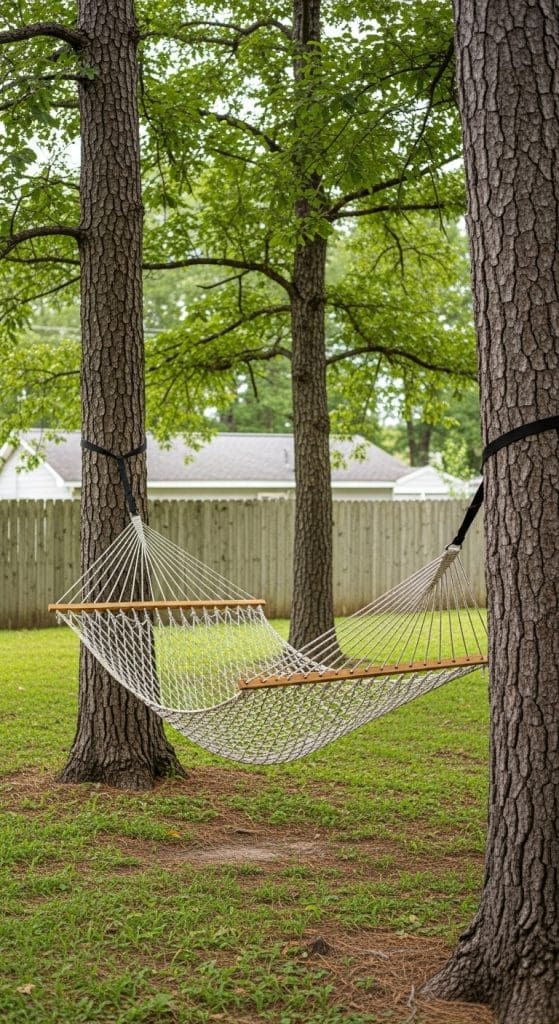
If your yard has two sturdy trees about 10 to 15 feet apart, you already have the perfect hammock anchor points. We recommend using tree straps instead of ropes, since they protect tree bark while offering secure support. This type of hammock idea for the backyard is popular because it requires no additional structure and uses natural shade for sun protection. The science is simple: trees absorb and block UV rays, making the area cooler and more relaxing throughout the day.
2. Build a Freestanding Hammock Stand
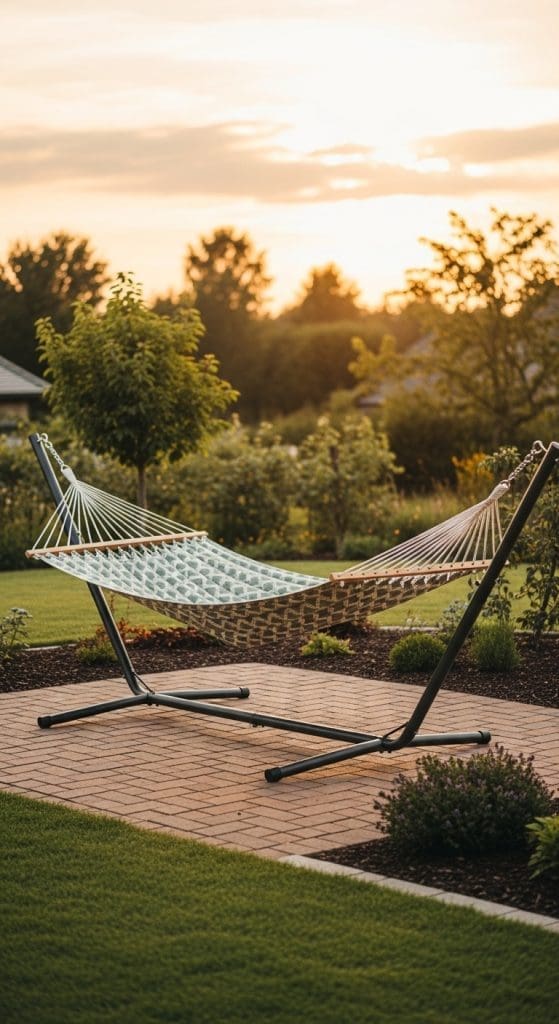
Not all backyards have ideal trees. We suggest building a DIY A-frame or post-style hammock stand using pressure-treated lumber or galvanized steel poles. The logic here lies in creating a stable, customizable frame that can be placed anywhere. Freestanding stands also allow more flexibility in layout, which is ideal for renters or for patios where ground fixtures aren’t allowed.
3. Install a Pergola with Hammock Hooks
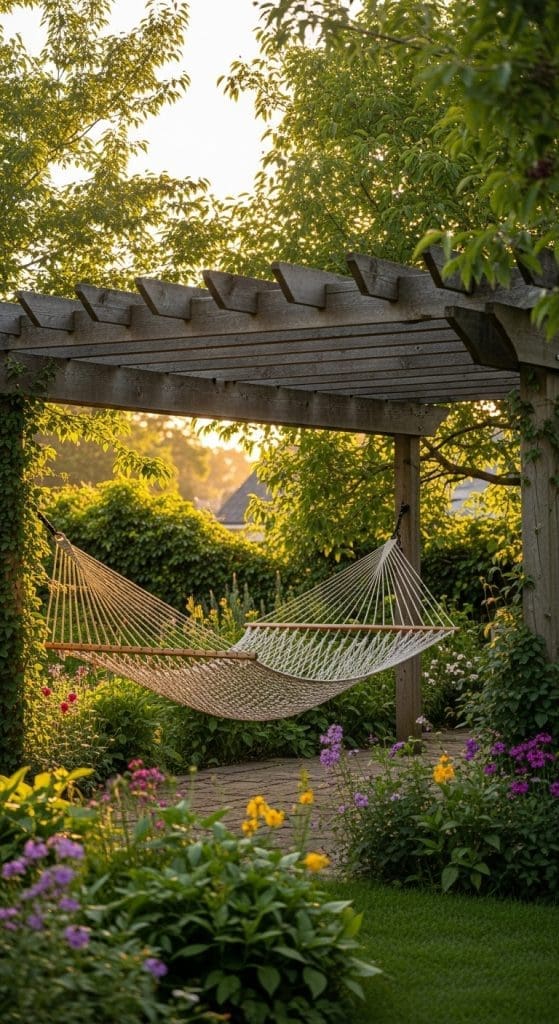
A pergola can double as a stylish anchor point for your hammock. We recommend reinforcing the beam connection where you plan to attach hardware, since hammock forces concentrate on small areas. This backyard hammock idea adds architectural interest while offering overhead protection from the sun or rain. It also allows you to layer in climbing plants or curtains for extra privacy and ambiance.
4. Add a Hammock Chair to a Porch or Beam
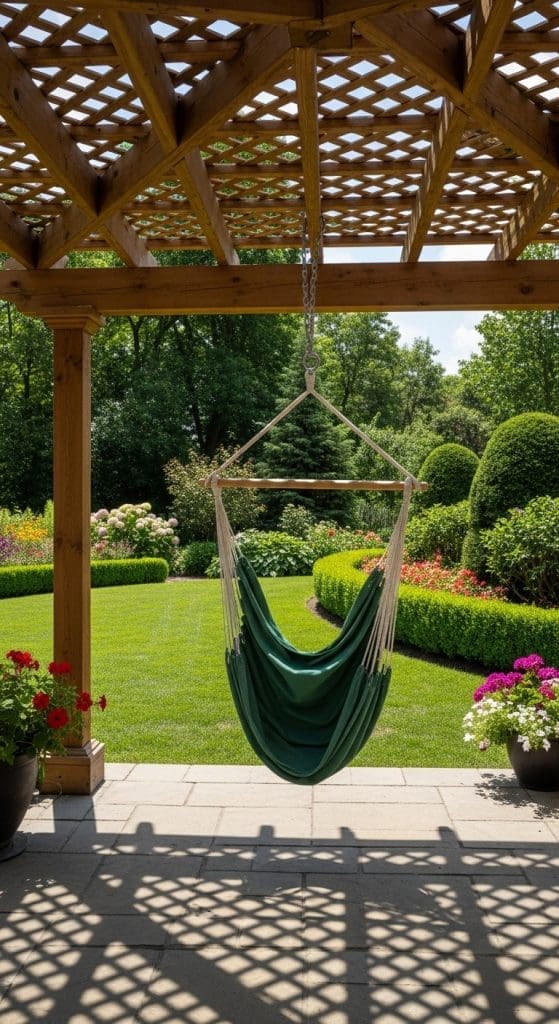
Hammock chairs require less space than full hammocks and can be installed with a single hook from a ceiling beam or strong tree limb. We suggest this for small patios, decks, or covered porches where floor space is limited. These suspended chairs still provide the swinging comfort of a hammock but with vertical clearance in mind, making them ideal for relaxing, reading, or watching nature.
5. Create a Boho Corner with a Macrame Hammock
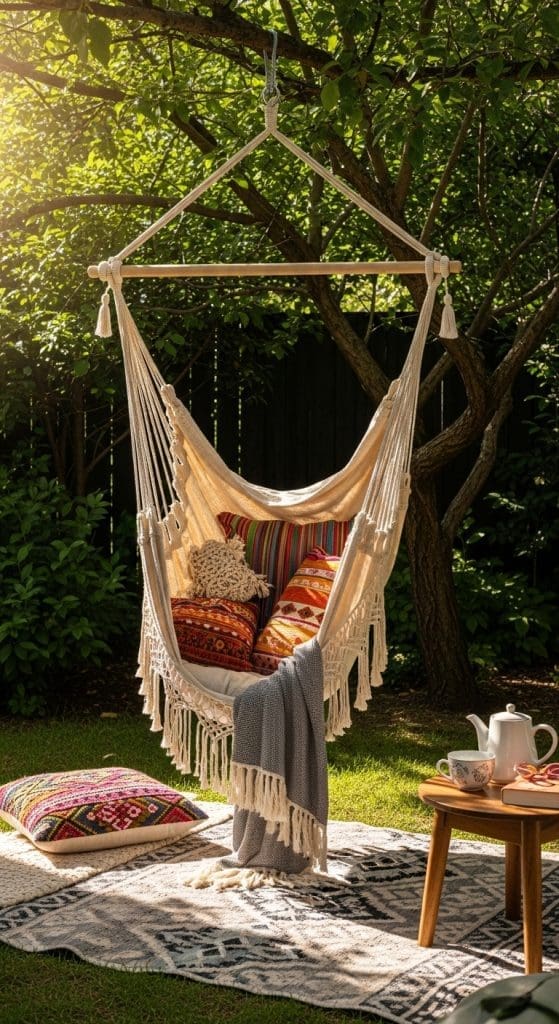
For a decorative yet functional lounging area, we recommend installing a macrame-style hammock in a quiet backyard nook. The texture and detailing of macrame hammocks add a touch of Bohemian flair, and they often come in neutral tones that blend well with natural landscapes. Pairing this with cushions, potted plants, and string lights turns a basic area into a cozy outdoor lounge.
6. Use a Two-Pole Metal Hammock Base
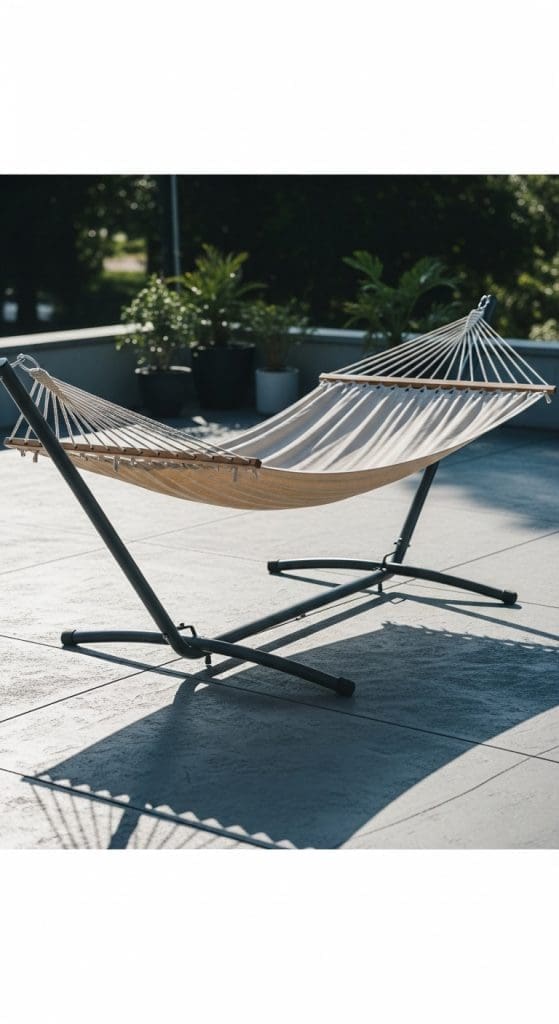
If you want something more durable and low-maintenance than wood, a steel or aluminum hammock base offers excellent strength and resistance to weather. We recommend powder-coated finishes to prevent rust and fading. This backyard hammock solution is ideal for people who want a portable setup that doesn’t require tools or trees. It works especially well on concrete patios and decks.
7. Suspend a Hammock Over Gravel or Mulch
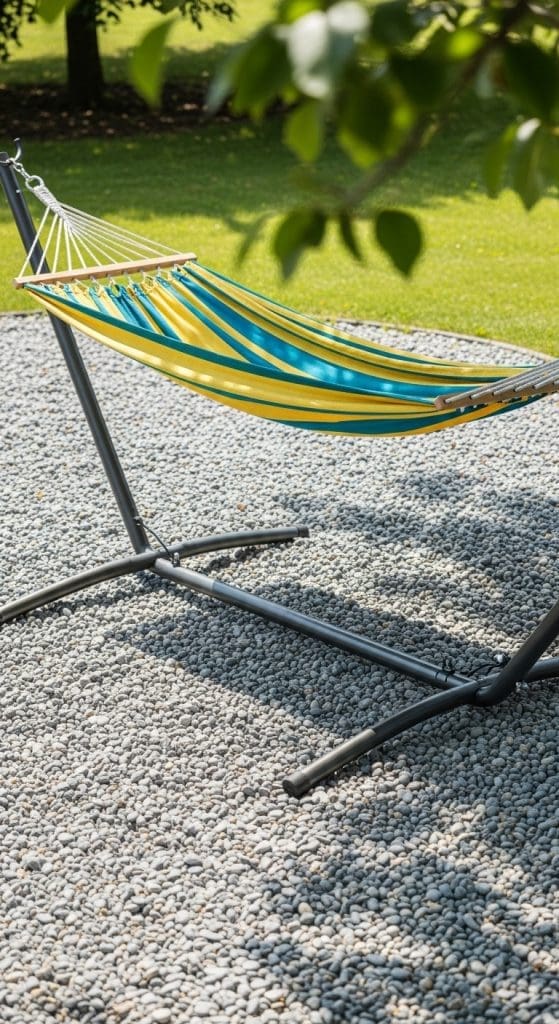
We suggest placing hammocks over gravel, mulch, or other permeable ground covers that improve drainage and minimize mud buildup underfoot. This is especially helpful in rainy climates where grass can wear down and turn to dirt. Gravel and mulch also prevent weed growth and reduce the risk of slipping when getting in and out of the hammock.
8. Build a Hammock Deck Platform
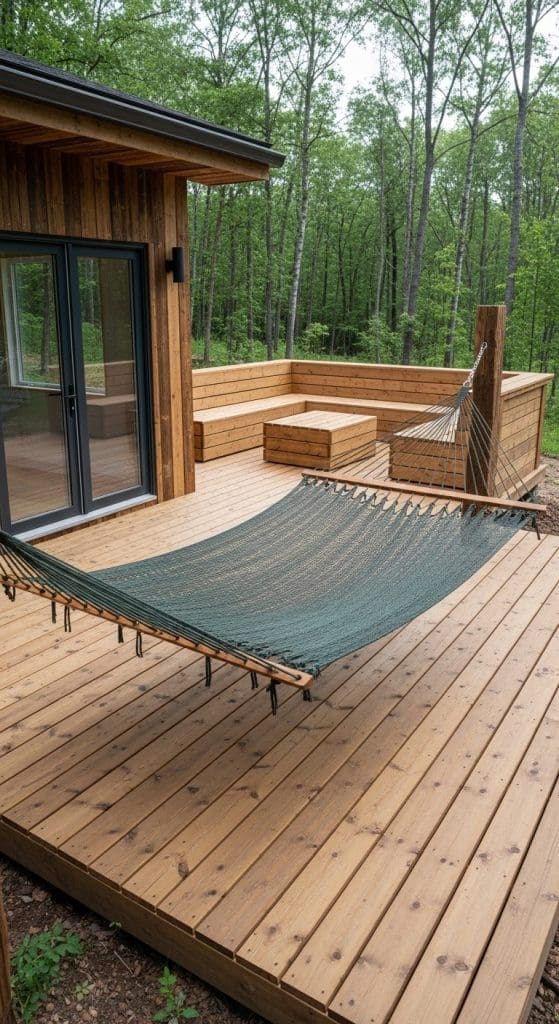
A raised wooden platform can serve as a stylish, flat base for your hammock. We recommend this idea for sloped yards or uneven terrain. By creating a level surface with decking boards, you can ensure your hammock stays balanced and safe. It also improves water runoff and allows for integrated seating or storage under the structure.
9. Use a Tent-Style Hammock for Camping Vibes
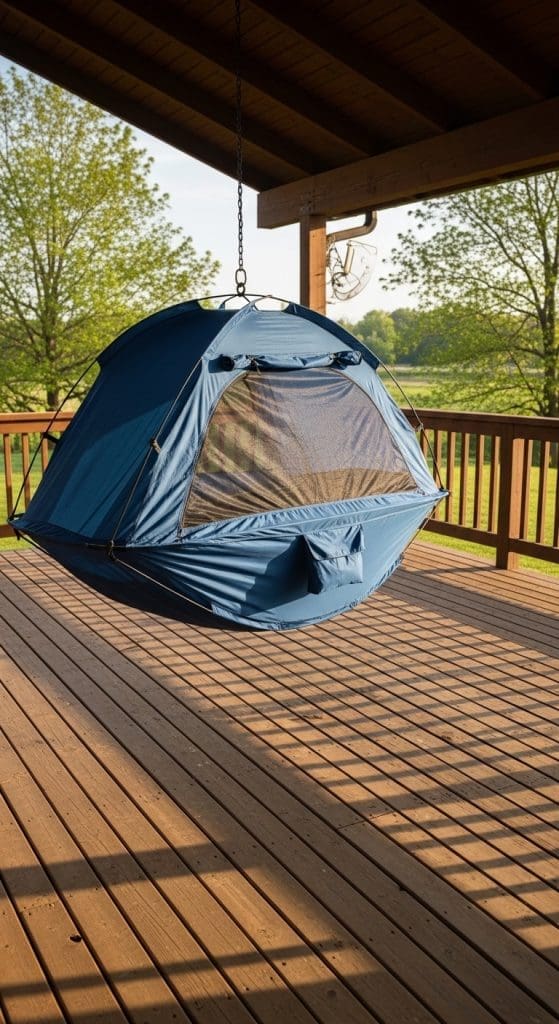
For a hybrid between tent and hammock, we recommend using a tent-style or enclosed hammock. These come with bug nets and rain flies, making them perfect for backyard camping. The science behind these hammocks lies in their ability to suspend you above the ground, keeping you warmer and drier than traditional tents while providing full-body support.
10. Hang a Hammock Under a Raised Deck
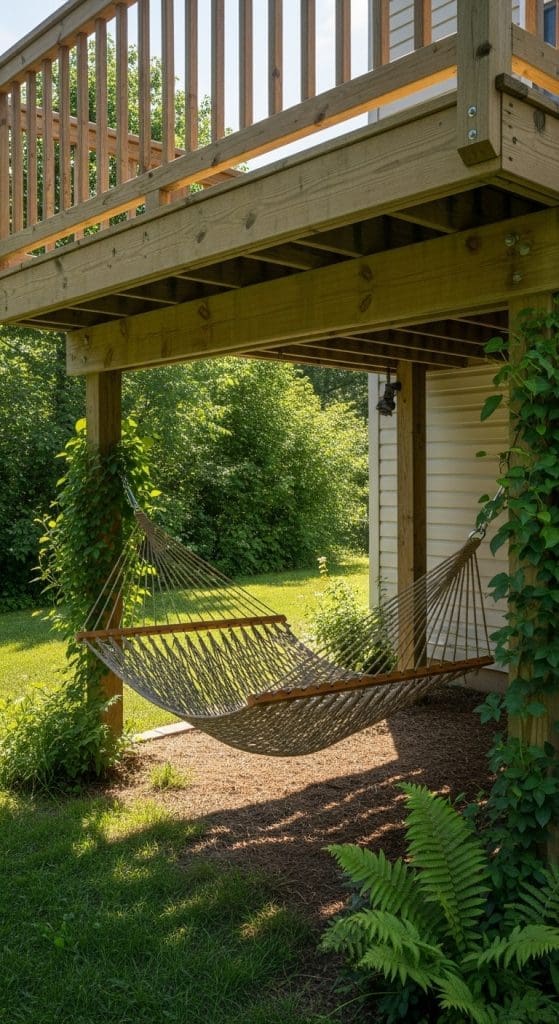
We suggest installing a hammock underneath an elevated deck to make use of otherwise wasted vertical space. This location provides natural protection from sun and rain, and it creates a hidden retreat that feels private. The key here is ensuring that the joists are strong enough to hold the weight and that hanging hardware is installed safely with weight-rated anchors.
11. Install a Hammock Near a Water Feature
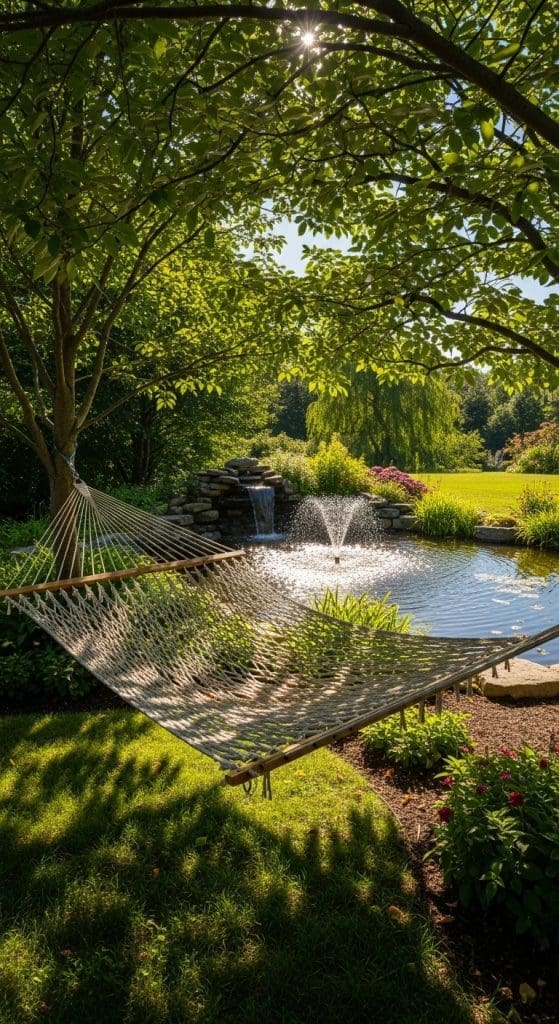
If your backyard has a fountain, pond, or pool, consider placing your hammock nearby. The sound of running water promotes relaxation by reducing stress and masking urban noise. We recommend setting the hammock at a safe distance to avoid splashing or dampness, and using weather-resistant materials to handle higher humidity.
12. Build a Hammock Arbor with Planters
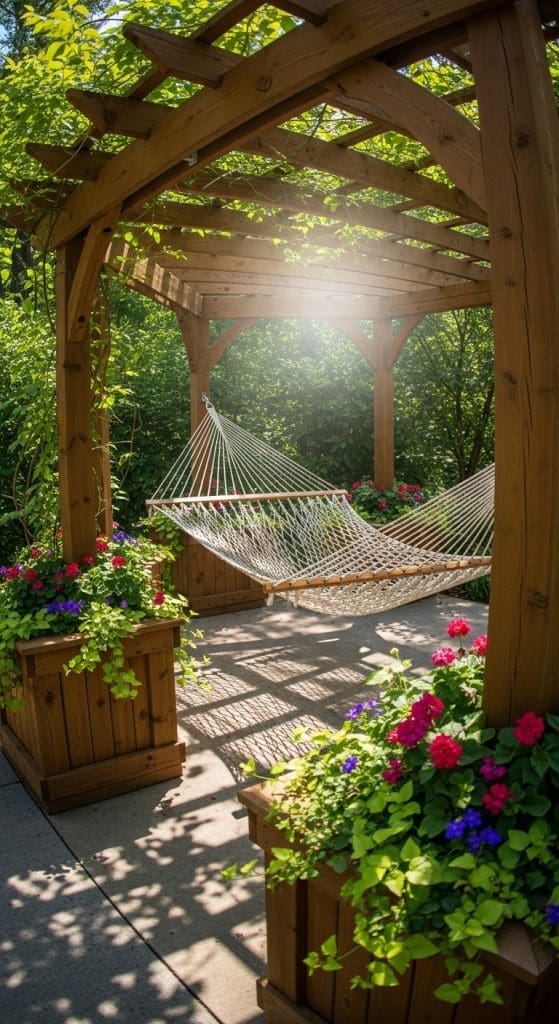
We recommend building a wooden arbor that includes integrated planters at the base. This serves dual purposes: the arbor provides sturdy hammock support, and the planters add stability and visual appeal. You can use climbing plants like jasmine or clematis to provide shade and fragrance, turning your backyard hammock setup into a peaceful green escape.
13. Use Carabiners for Easy Setup and Removal
We suggest using locking carabiners with tree straps or hammock hooks for a safer and quicker setup. Carabiners allow you to clip and unclip the hammock easily, which is ideal for storing it indoors during bad weather. This is one of the most practical hammock ideas for backyards where space is shared or multipurpose.
14. Hang a Double Hammock for Two-Person Lounging
If you want to relax with a partner or pet, we suggest installing a wide double hammock made from sturdy cotton or polyester blends. These models are designed to hold more weight and offer more space. The idea is simple: more surface area means better comfort and fewer falls. Be sure to install it with heavy-duty anchors and a low enough height for easy entry.
15. Use Hammocks in Backyard Play Areas
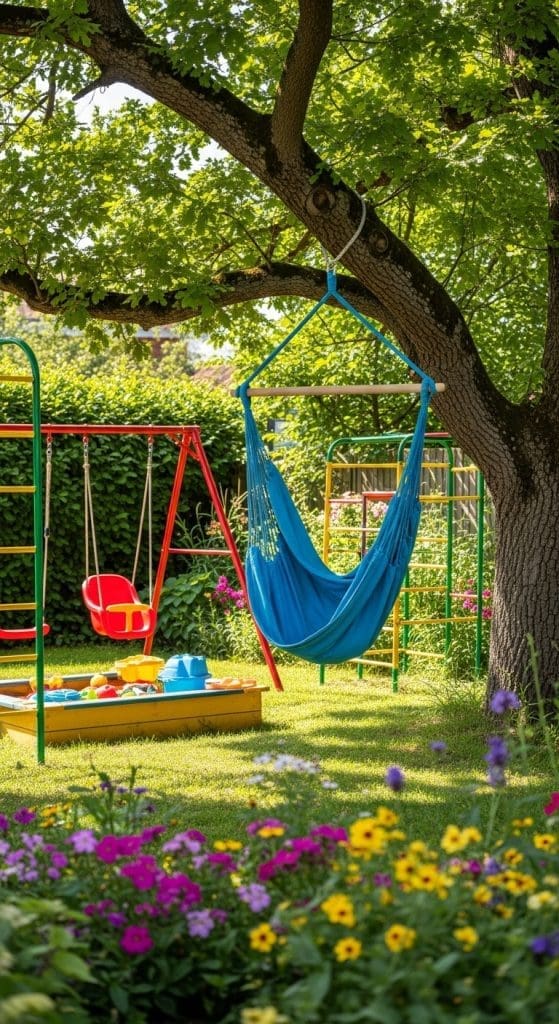
For families, we recommend adding a child-size hammock to a shaded corner of a play area. Studies show that gentle swinging can improve sensory integration and balance in children. Choose bright, washable fabrics and mount them at a safe height with soft landing surfaces like rubber mulch or foam tiles.
16. Create a Hammock Lounge with Multiple Setups
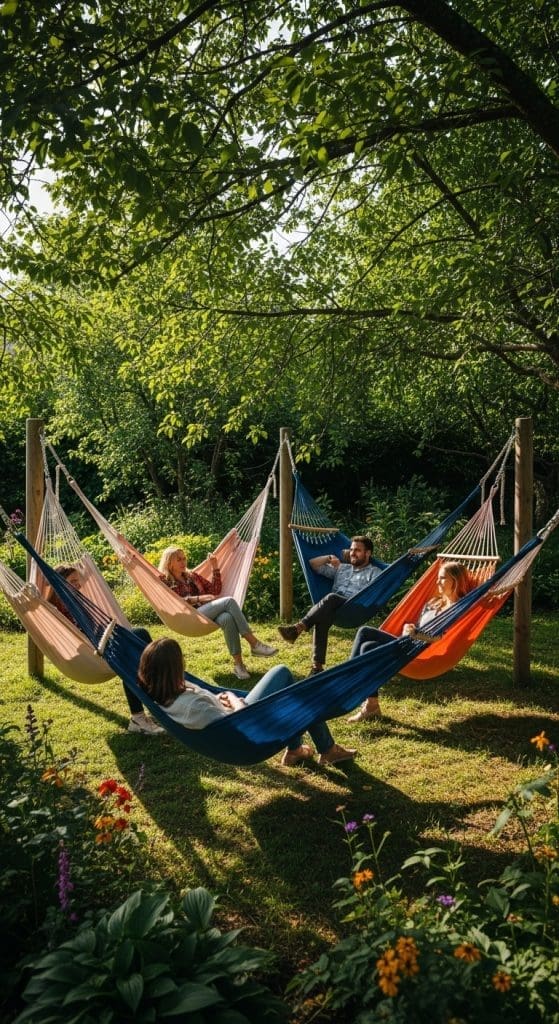
We suggest creating a group relaxation space using multiple hammocks strung between shared posts or a circular arrangement. This idea works well for entertaining, offering guests a casual place to rest. Space the hammocks evenly and ensure that support posts are reinforced with concrete footings to prevent shifting.
17. Mount a Hammock to Fence Posts

In tight urban yards, consider attaching a hammock to reinforced wooden fence posts. We recommend checking that the fence is stable and installing a cross-beam or post brace if needed. This hammock idea for small backyards takes advantage of vertical structures without eating up space, making it great for minimalist or modern landscapes.
18. Use Bright-Colored Hammocks for Visual Impact
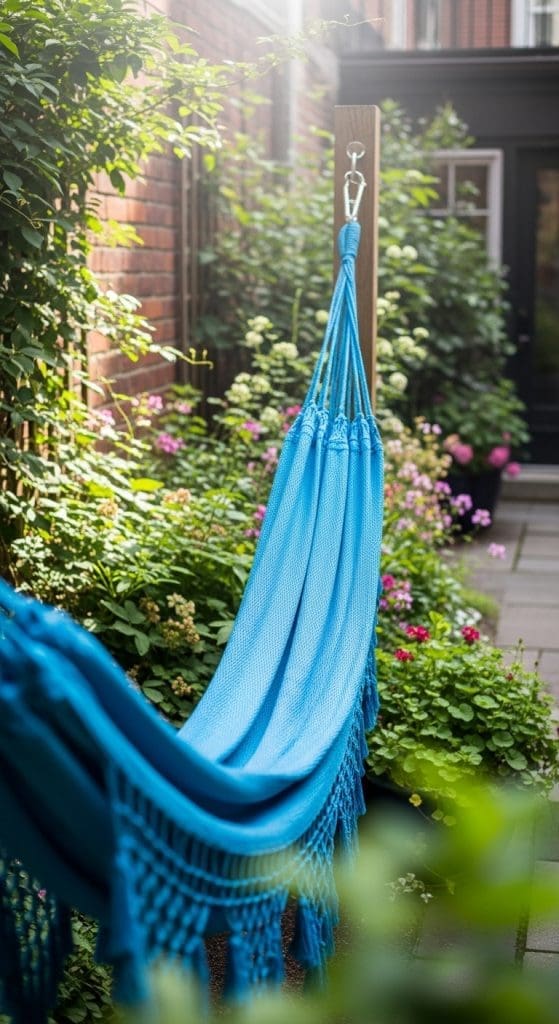
We recommend choosing vibrant hammock fabrics like red, turquoise, or orange to create a focal point in the yard. Bright colors stimulate the eye and contrast nicely with greenery. This is particularly useful in neutral or monotone gardens where you want to introduce a fun, welcoming atmosphere with little effort.
19. Install Solar Lights Near the Hammock
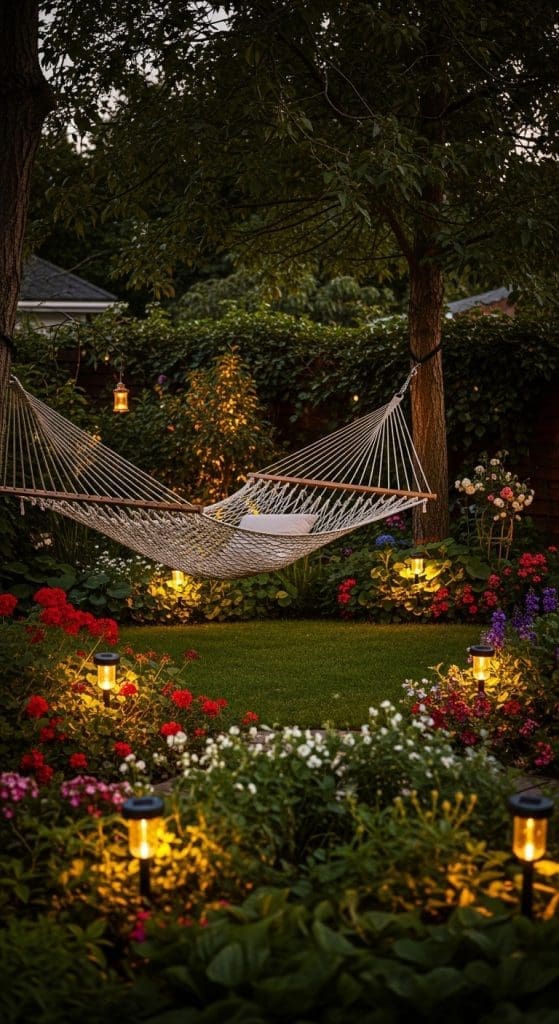
For nighttime use, we suggest placing small solar-powered lanterns or string lights near the hammock zone. Low lighting not only enhances safety but also improves ambiance. Research shows that soft lighting can help regulate circadian rhythms and encourage restfulness, making your backyard hammock a sleep-friendly space.
20. Create a Reading Nook with a Side Table
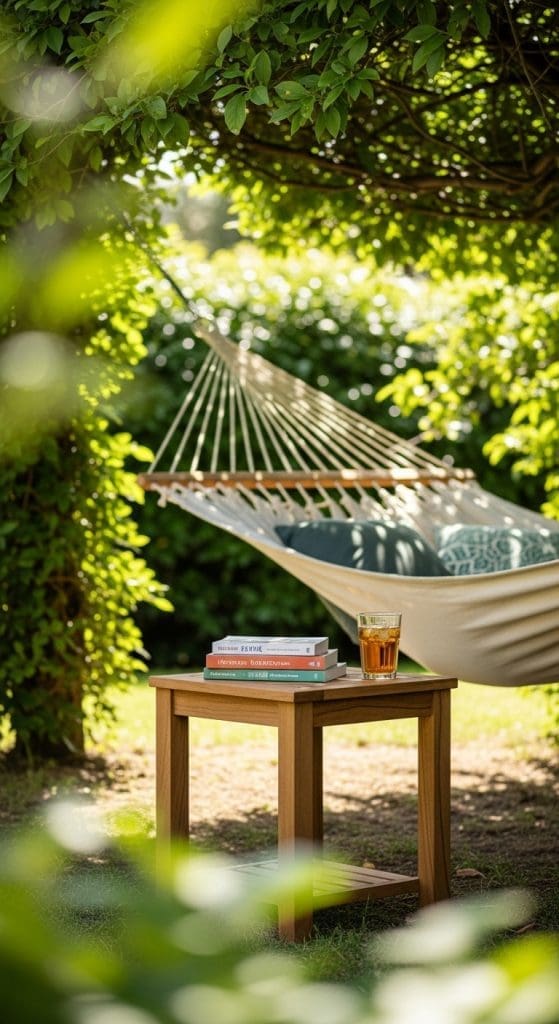
We recommend adding a small weatherproof side table next to your hammock for books, drinks, or devices. Combine this with a shaded overhead canopy and turn your backyard hammock into a functional reading retreat. The logic here is usability: if the hammock area serves multiple functions, you’ll use it more often.







